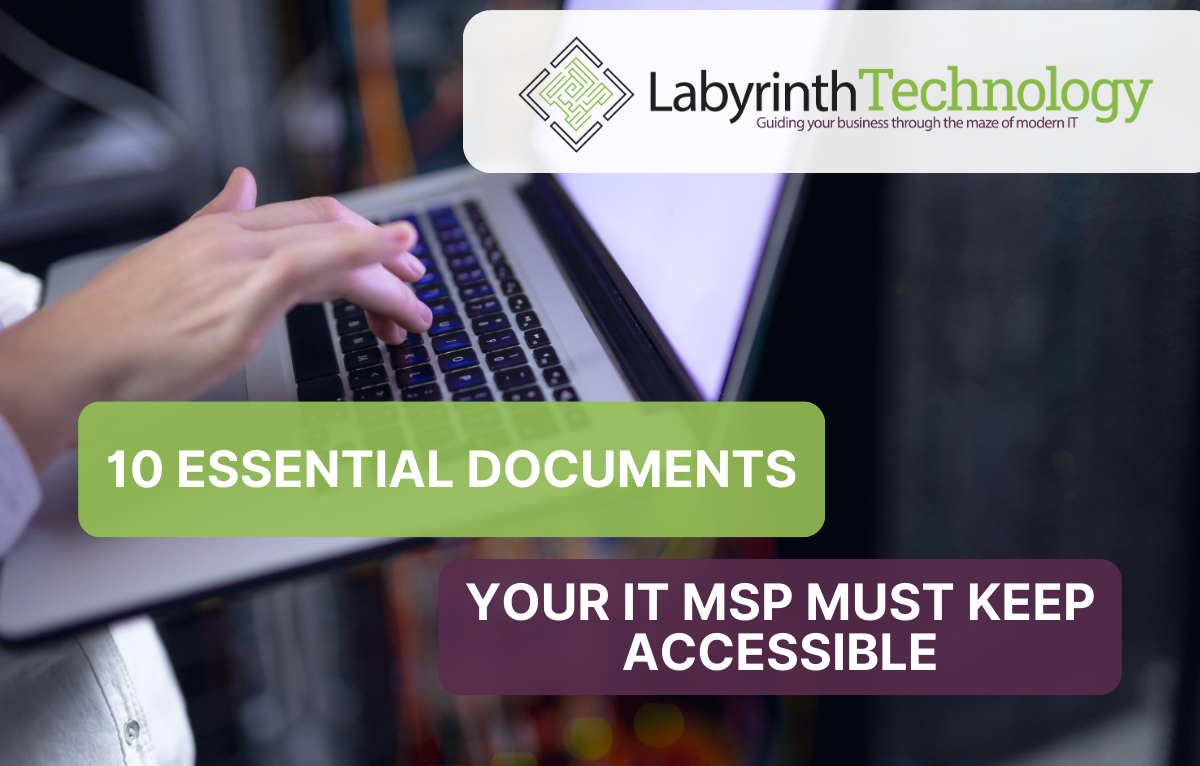
It never ceases to amaze us how many clients we onboard whose previous IT Managed Services Provider (MSP) overlooked even the basics of network documentation. Lacking detailed records, IT engineers are often left to rely on memory – theirs, their colleagues’, or even the client’s! This approach is a recipe for errors and delays in service requests. Moreover, it hinders the ability to take a comprehensive view of all systems when assessing IT strategy and security.
At Labyrinth Technology, our thorough initial onboarding survey typically uncovers most of the information we need to craft our exceptional documentation pack. However, we frequently encounter a common hurdle: passwords for routers, SANs, access points, etc., are missing. This leaves us no choice but to reset these devices to factory settings and start afresh. Such an oversight usually indicates a lack of routine maintenance (like firmware upgrades or security patches) by the previous MSP. While this situation means we have the opportunity to set things right and address any performance or security issues, it also introduces delays due to the prior MSP’s basic neglect.
No matter the size of your organisation or the sector you operate in, these documents are crucial, especially if your IT Managed Services Provider manages various networks. Equally important is implementing a system for updating these documents and managing change & version control (we use SharePoint for automation in this area).
So, here’s a list (in no particular order of importance) of some key network documents your outsourced IT department should be creating, maintaining, and making easily accessible to you. Rest assured, this is standard information that we gather and maintain for our clients, available at any time.
This is essential for keeping a comprehensive record of core services and infrastructure, such as network, servers, backup, cloud services, and business applications. It’s crucial that any future employee of your current or future MSP can understand the setup easily. This documentation should include contact details for all third-party suppliers.
Tracking significant changes to IT systems is vital. This helps your MSP identify recent alterations that might contribute to issues, or information needed for smooth upgrades or installations. Changes are typically logged through a helpdesk system, which also maintains version control of your IT systems documentation.
Maintain a detailed document of all software assets, including their usage locations. This register is necessary to track software licenses, usage, and activation procedures for reallocating to new users or devices.
It’s crucial to have an up-to-date record of all IT hardware assets and their locations. This prevents overspending on unnecessary equipment, ensures suitability of hardware for purchase, and helps in preventing theft, loss, or damage. We use asset tags and an asset tracking system for all client devices we manage, which provides detailed information on installed hardware and software.
Establish and document standards for creating user accounts, building servers, and configuring computers. This should specify applications to install, services to disable, ports to block, etc. These standards should be pre-agreed with your MSP and reviewed periodically according to the latest security guidelines.
Create and regularly review a register that details all known IT risks, current controls, and suggested controls. The nature of risks will vary based on your business sector and may include data security and financial risks. These risks and controls should be reported to your senior management team regularly.
This diagram should outline IP addresses for different network segments. It’s particularly important if you use different VLANs (Virtual Local Area Networks) or a DMZ (Demilitarised Zone). This aids new MSPs or their employees in understanding IP schemes and network segmentation.
This should depict the physical layout of your network, including servers, routers, firewalls, printers, computers, and phones. While it need not list every single computer, it should clearly show how key devices are interconnected within your network.
Your MSP must document all static IP addresses to prevent IP address conflicts.
Maintain a secure database of credentials for essential system accounts and devices, such as routers, firewalls, and servers.
Looking for a reliable IT Managed Services Provider? Choose us for professional, expert solutions tailored to your needs. Contact Labyrinth Technology today. Your IT infrastructure deserves the best – let’s make it happen together!
Download in PDF.
Empowering London Businesses with Efficient IT Solutions to Save Time and Stay Ahead of the Competition.